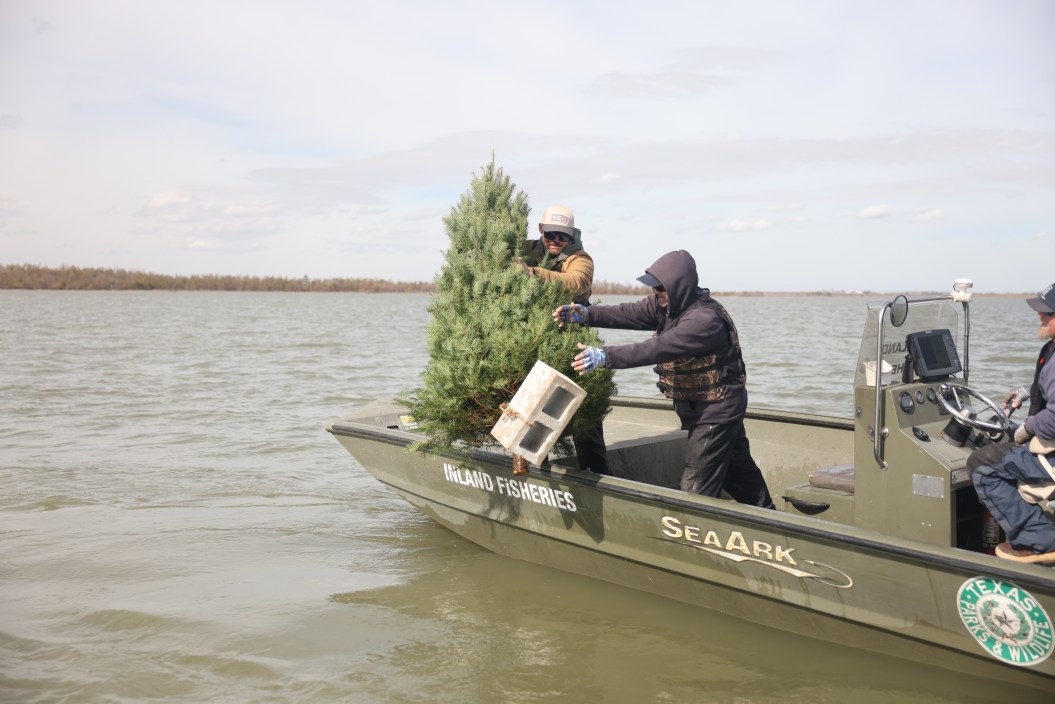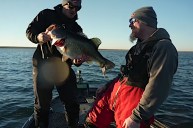If you're wondering what to do with that Douglas fir shedding its needles in the corner of your living room, you're not alone. An estimated 25 to 30 million live Christmas trees are purchased in the United States every year. And after Christmas, far too many of those end up in a landfill or incinerated.
That's why YETI has partnered with the Texas Parks and Wildlife Department to put these trees to better use. Together with the Inland Fisheries Division of the TPWD, YETI is collecting Christmas trees at its flagship store in Austin on January 7th for the purpose of waterway revegetation.
How An Old Christmas Tree Can Help Support Big Bass
"We're always looking for ways to support initiatives and partners that keep the wild, wild," says YETI Director of Community Marketing, Joe Koehly. "Partnering with TPWD lets us take a very specific and active role in our local community of Austin, Texas, where many of us spend time fishing in our own ponds."
Nationwide farming, damming, and urban development cause sediment to accumulate in reservoirs, degrading underwater vegetation and fish habitat. That's bad for anglers—and your Christmas tree can help.
Revegetation is a long-term project. However, an old Christmas tree can give small bait fish the gift of temporary shelter, as well as ambush spots for predatory fish such as largemouth bass and catfish. "Even within ten to fifteen minutes of sinking the tree, we see fish utilizing it as habitat," says John Findesen, a biologist with the TPWD.
An old Christmas tree can provide fish cover for between one and five years, and be a part of broader revegetation efforts. That can turn a pond into a honey hole. In years past, the TPWD has provided anglers with coordinates of tree drops. Of the department's biggest projects, at Lake Brownwood and Lake Proctor in central Texas, bass clubs reported great catches. These sites were revegetated with anywhere between 200 and 600 trees that otherwise would be decomposing in a landfill.
"We hope this program brings awareness to Christmas tree reefs and other recycling programs so that we can turn a habit into a new tradition that gives back to the wild," says Koehly.
Recycling Old Christmas Trees Is Good for the Planet
The TPWD's efforts are just one way that groups around the country have utilized Christmas trees to help the environment. In neighboring Louisiana, parishes, nonprofits and volunteer groups collect Christmas trees from the curb and bring them to coastal marshes to combat coastal erosion. In addition to being important wildlife habitats, the Pelican State's wetlands provide low-lying communities with protection from storm surges.
Call it another environmentally friendly feather in real Christmas trees' cap. As reported here in WOS, a real Christmas tree can absorb more than 48 pounds of carbon dioxide in a year, and Christmas tree farms can be a boon to bird populations. With the efforts of groups like TPWD, and now brands like YETI, the tree that shelters your gifts every year can help shelter the earth.
Be sure to look into Christmas tree recycling projects in your area — and make sure the giving season is also about giving back to the earth. Your local sanitation department is one place to start; some cities' curbside pickup operations lead directly to mulching and other sustainability efforts. In other cases, your local church or Boy or Girl Scout troop may be of service. Barring all of the above, your own backyard or local pond might do the trick, depending on the local fauna.
And if you happen to live in or near Austin, you can visit YETI's flagship store on January 7th to drop off your tree.
READ MORE: Why Real Christmas Trees Are Better For the Planet Than Fake Ones




